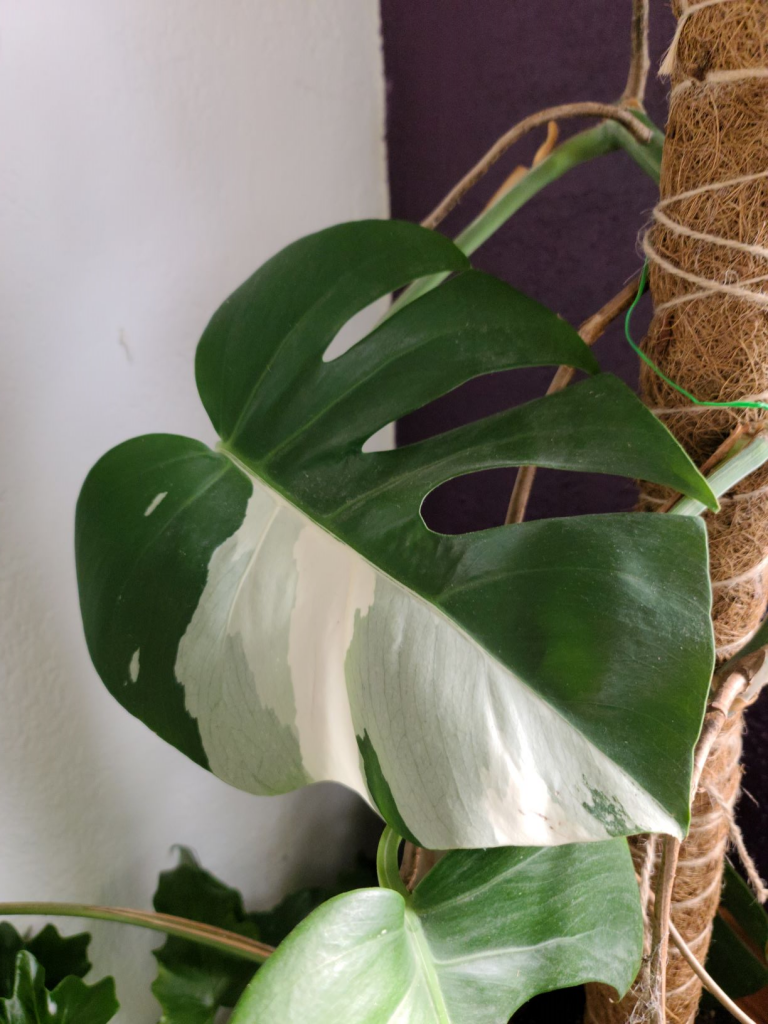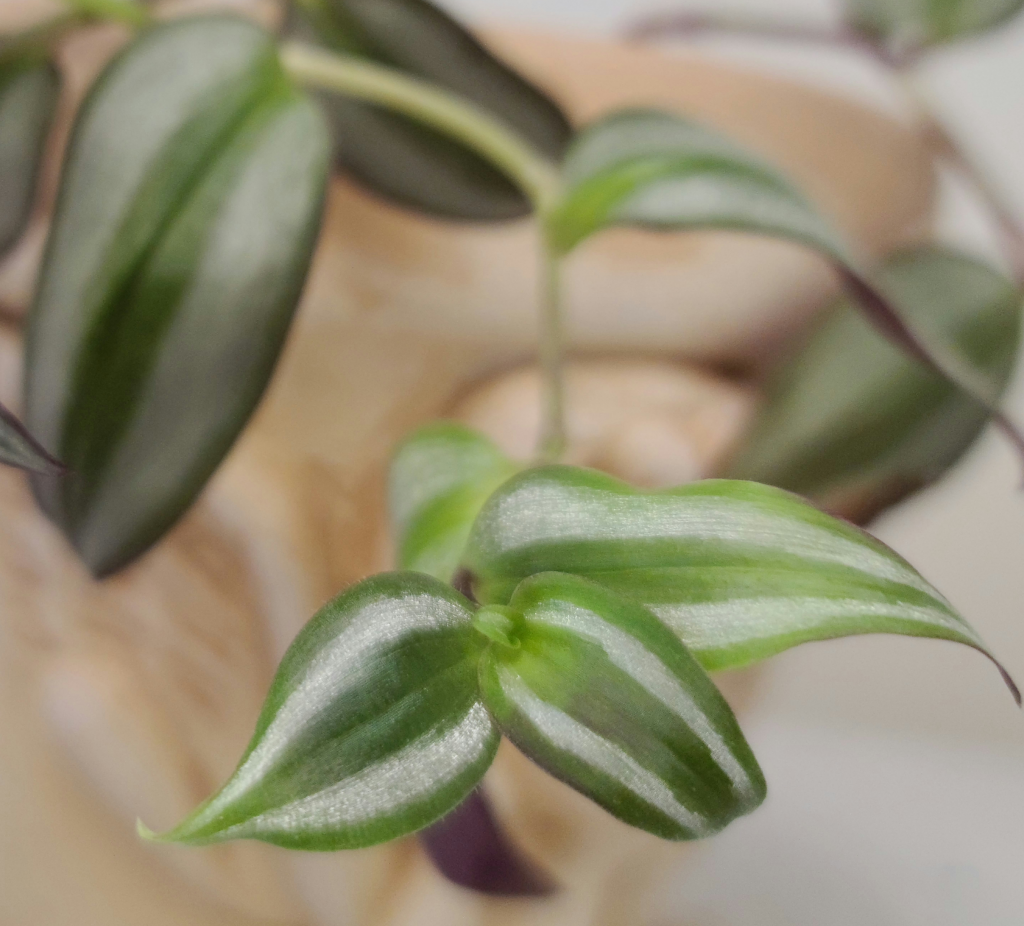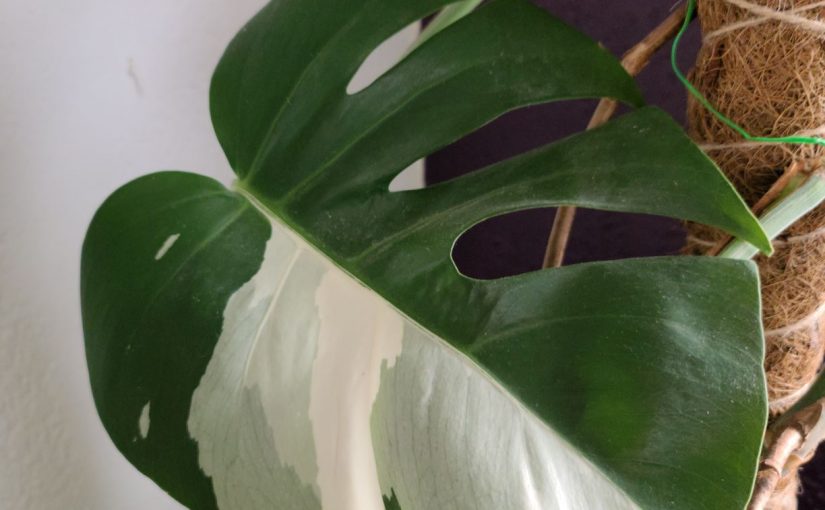It is no secret that houseplants are hot right now. Interest was growing before the pandemic, especially with millennials and younger folks. Then the pandemic hit. Houseplant interest skyrocketed since people were stuck at home and wanted to bring a little bit of nature indoors to make their spaces a little more cozy for 24/7 habitation.
This has caused the demand, and price, of many houseplants to increase, especially if they are on the rarer side. One thing that increases the price of many plants is when a variegated version of a standard plant has been developed.

Just as an example, after posting a photo of my “reading nook/houseplant oasis” in my home office I was informed that variegated form of a Monstera deliciosa vine that I had was the highly sought M. deliciosa “Albo-Variegata” cultivar, usually referred to as a Monstera albo, or just Albo. Folks were reaching out to buy cuttings right and left. I ended up selling 5 single leaf/node cuttings over one weekend and made $675 in the process. That’s right, $675! The most variegated of the leaves sold for $200, and that was actually a bargain price. The garden writer for the local paper, the Omaha World Herald, even picked up the story and shared it as a focus on the four new houseplant shops that have popped up in the city over the last few months.
Had my plant not had the variegation that made it an albo, each of those cutting would have been worth a few dollars apiece. So what makes some plants variegated and others not? Sometimes the variegation is the standard form found “in nature” and sometimes it is a cultivar or variety that has been bred or discovered by chance. Let’s take a look at all the ways that a plant can get that variegation, whether it is standard or rare.
Chimeric variegation

This is a common form of variegation and the one responsible for the variegation of my Monstera. In this form, a genetic mutation in some cells changes that cell’s ability to produce chlorophyll. It may reduce chlorophyll production, resulting in yellowish or silver coloration, or eliminate chlorophyll altogether, resulting in white coloration.
The name chimeric or chimeral is based on the fact that the plant displays two (or more) chromosomal patterns on one plant. In Greek mythology, a Chimera is a frightening fire-breathing female monster with the head of a lion, body of a goat, and the tail of a serpent.

This variegation can be stable, where the pattern persists throughout the plant. Or it may be unstable, where it is random on certain leaves and parts of the plant can revert back to the standard green form. These plants can also produce leaves that are almost totally white, which usually results in a leaf that will die since it can’t photosynthesize.
This type of variegation also means that cutting or propagations may or may not be “true” to the pattern. It can be random. For my Monstera, the presence of white striping in or around the node that will become the new plant is the important marker for whether the new plant will be variegated or not.
One common chimeric houseplant is the plant formerly known as Sanseveria, now a Dracena (Snake plant or mother-in-law’s tongue). Many of the different color patterns on some of the cultivars are due to cuttings taken from different parts of the “original” natural type that display different colors on them.
Viral Variegation

While beautiful, this variegation will often reduce the productivity of plants if not kill them outright. There aren’t a lot of houseplants that have this variegation, but some Hosta cultivars do. Probably the most famous case of viral variegation is the Tulip Mania during the Dutch Golden Age (in the 1600s). Prices of tulips skyrocketed and people were buying them as investments (maybe like the current houseplant craze, or GameStop stocks, or bitcoins). Unfortunately, as the virus reproduced plants kept getting weaker and weaker. Eventually the tulip market collapsed and lots of people went broke. Let’s hope that doesn’t happen with the houseplant market….at least with my fancy Monstera.
Natural Variegation

This type of variation occurs when the patterns or colors of the variegation are written into the DNA of the whole plant. It will occur regularly throughout the entire plant, not randomly on some parts as in chimeric or viral variegation. This variegation is passed through cuttings and usually through sexual reproduction from seeds as well, though different variations may pop up that cause a more desirable or rare cultivar.
Common houseplants such as Tradescantia, Maranta (prayer plant), and many more common plants have this type of variegation.
Blister, bubble, or Reflective Variegation

This type of variegation occurs when there is an air pocket or bubble between the lower layer of tissue and epidermis, or skin, of the leaf. The lower level typically has green pigmentation from chlorophyll and the epidermis does not, resulting in a pattern that is usually white, silver, or yellowish though other colors could appear. This pattern can be blotchy or splotchy like in some types of Pothos and Pepperomia. It can also occur along the veins of some plants, resulting in white or silver veins on green leaves, as in some Alocacia, Anthurium, and Philodendron varieties.
In conclusion…..
Even if you don’t have an expensive plant hiding in the corner, houseplants can add lots of fun and color to your living spaces. And sometimes, your houseplant obsession can even pay for itself. Online swap and sale groups have houseplant afficionados swapping and selling cuttings and plants all over the place. So enjoy your plants….and maybe you’ll find a cash cow hiding in the corner. Don’t mind me….I’m just over here propagating more Albos to fill up my “mad money” jar.
Sources
Variegation mutants and mechanisms of chloroplast biogenesis
Variegated Indoor Plants: The Science Behind The Latest Houseplant Trend
Chimeras and Variegation: Patterns of Deceit

Thank you for this nice classification of variegation sources. Though personally I dislike plants with chimeric or viral variegation–they look sick to me–I find your information very interesting. I am familiar with the types, but the reflective (as the actual mechanism) is a new one to me. I guess, it should still be classified as a subset of natural variegation because, judging by its uniform distribution throughout a plant, it is genetically coded, isn’t it? Thanks again, a fun piece! And good luck with your little “albo” business!
You’re right, the reflective variegation is encoded in the DNA, but the pattern isn’t set like in the natural variegation. In the Philodendron Birkin, for example, every leaf has a different pattern.
Fascinating!